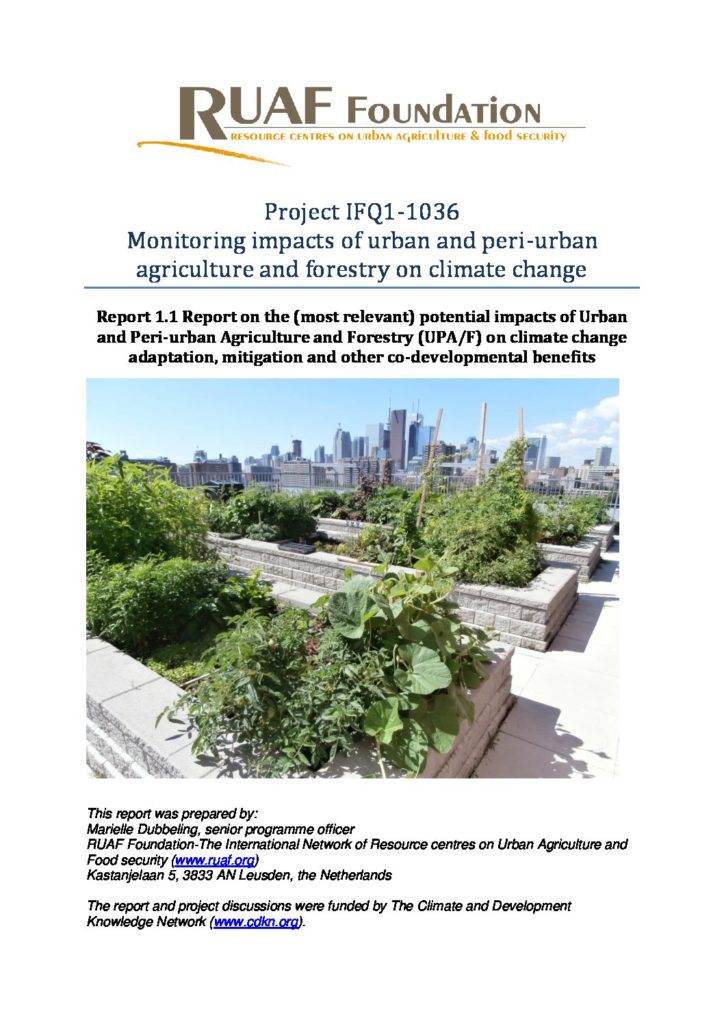This report
On a Huddle electronic discussion platform, project partners embarked on a critical reflection on the different impacts of Urban and Peri-urban Agriculture and Forestry (UPA/F) on climate change adaptation and mitigation. This report provides a short summary of the main discussions and responses.
Urban and Peri-urban Agriculture and Forestry (UPA/F)
Urban and Peri-urban Agriculture and Forestry is often credited with providing the following benefits:
- Reducing “food miles” by producing fresh food close to urban markets;
- reducing fertilizer use and energy consumption by productive re-use of urban organic wastes;
- recycling wastewater and freeing up water for other uses;
- enhancing rainwater infiltration and storm water drainage;
- reducing the urban heat island effect and enhancing carbon sequestration by increasing the surface of green/ forested areas;
- providing better diets, urban food security, jobs and income, etcetera.
However are these mentioned impacts myths or reality? Which of the impacts are most significant/ relevant- also if compared to other climate change intervention measures? Which types of UPAF (e.g. urban forestry, community gardens, green roofs, commercial peri-urban agriculture and others) can contribute to a (more) significant extent to climate change adaptation, mitigation and overall city development and under what conditions/ situations?
Questions that may be posed include: “How many food miles and related GHG emissions/ energy use can be saved by producing food more locally; offsetting this against possibly higher consumer emissions and transport? For which food items would this be most relevant? Under which conditions?”
Or “How much food (or specific types of food) can UPAF produce, how much household or farm income can be generated through UPAF and to what extent does this actually reduce vulnerability of certain groups of the population- especially the poor and vulnerable?”

